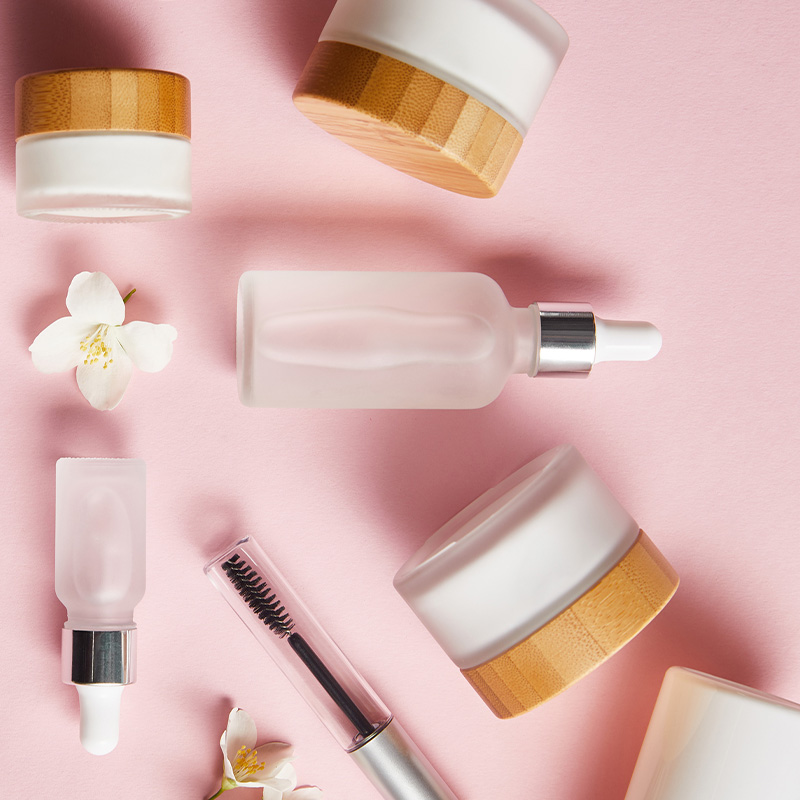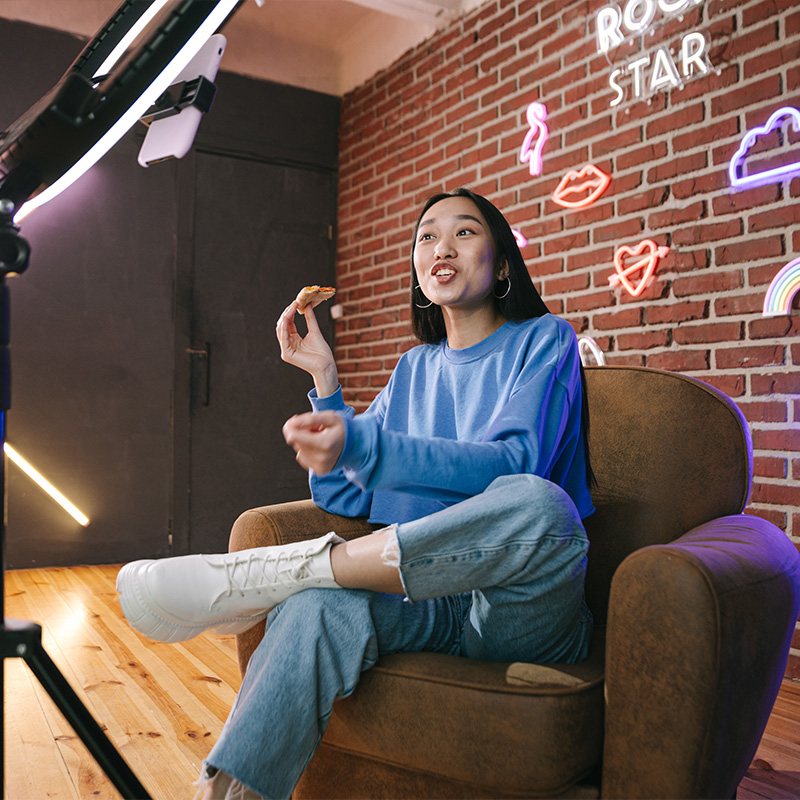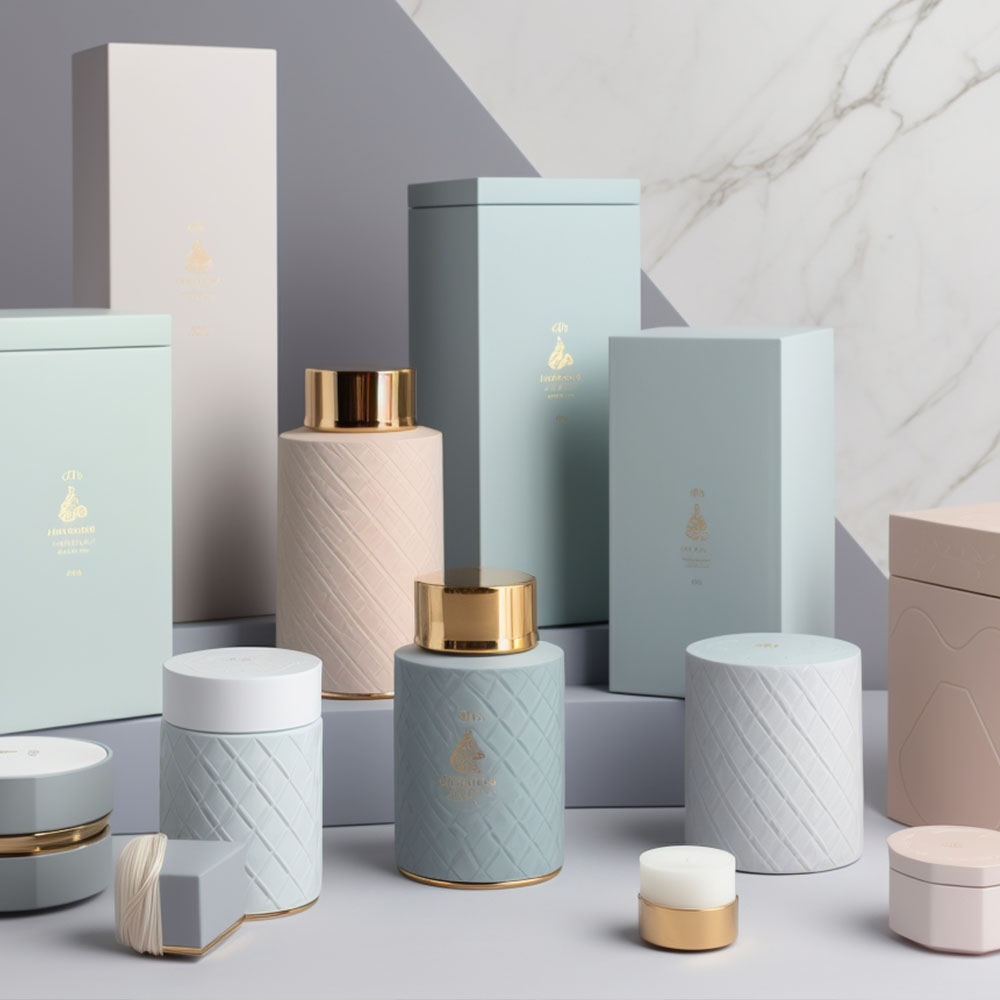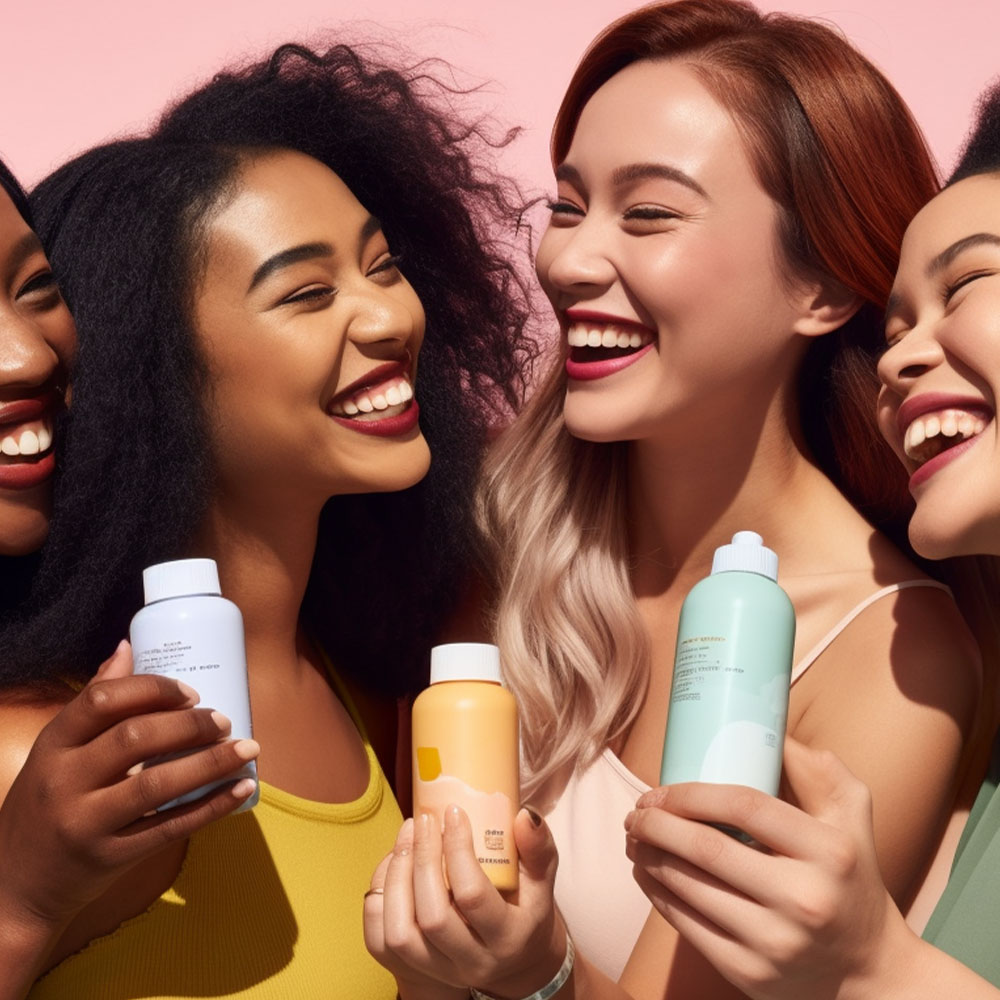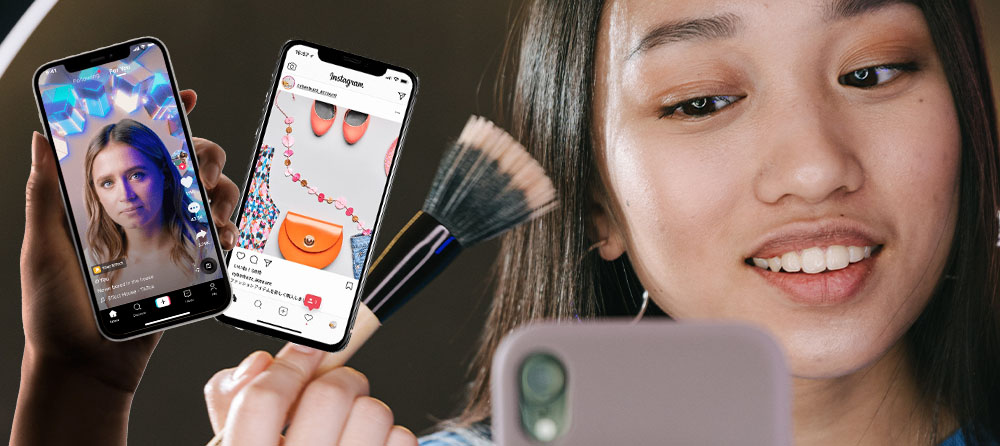
Content Marketing For Beauty Brands: The Ultimate Guide
Welcome to the ultimate guide for beauty brands looking to take their content marketing strategy to the next level. As a specialist in this industry, I understand the importance of creating innovative and captivating content that resonates with your target audience. In today’s competitive market, it’s not enough to sell products – you must also tell a story and connect with consumers on a deeper level.
This comprehensive guide will explore everything from identifying your brand voice and defining your target audience to developing compelling visual content and leveraging social media platforms for maximum impact. Whether you’re just starting or looking to revamp your current approach, this guide will provide actionable tips and best practices for elevating your content marketing game. So buckle up and get ready to discover how to stand out in beauty brands’ crowded world through strategic storytelling and creative digital campaigns.
Content Marketing:
Identifying Your Brand Voice
Did you know 77% of consumers purchase based on a brand’s personality? Therefore, crafting messaging for your beauty brand is crucial in establishing and maintaining its unique identity. Your brand voice should speak to your target audience’s wants and needs while setting you apart from competitors.
When shaping your brand personality, it’s important to consider elements such as tone, language style, and overall aesthetic. In addition, consider what makes your brand different from others in the same space – maybe it’s a focus on sustainability or inclusivity. All aspects of your content marketing strategy should reflect these distinct qualities.
Your messaging will play a key role in attracting new customers and building loyalty among existing ones. Consistency is vital in conveying your brand voice across various channels such as social media, blog posts, and email newsletters. By doing so, you can establish trust with your audience and position yourself as a reliable source for their beauty needs.
Remember, crafting messaging that truly resonates with your target audience takes time and effort. But by defining your brand personality and consistently communicating it through all forms of content marketing, you can create a lasting connection with consumers who share similar values and interests.
Content Marketing:
Defining Your Target Audience
Identifying your ideal customer is critical to compelling content marketing for beauty brands. Knowing who you want to target will help you determine the type of content and strategies to use. Creating buyer personas is a great way to better understand your target audience. Researching competitor audiences can also give you insight into what works for them and how you can differentiate yourself. With that knowledge, you can craft content that resonates with your ideal customers and stands out from the competition. By understanding your target audience, you can create content tailored to their needs and drive more sales.
Identifying Your Ideal Customer
Creating personas is an essential step in content marketing for beauty brands. Understanding demographics alone does not give you a clear picture of your ideal customer. Creating personas means developing detailed descriptions of the people most likely to buy and use your products.
To create effective personas, demographic research information such as age, gender, income level, and geographic location. Then go deeper into psychographic details like values, interests, behaviors, and purchasing habits. Finally, use this information to build profiles representing different segments of your target audience.
Once you have created these personas, you can tailor your content marketing efforts to meet each group’s specific needs and preferences. By understanding what drives each persona’s buying decisions and how they prefer to consume content, you can create more personalized messaging that resonates with them on a deeper level.
In conclusion, identifying your ideal customer through creating personas is crucial for successful content marketing for beauty brands. It allows you to develop targeted campaigns that speak directly to the needs and desires of each segment within your target audience. With strong personas in place, you can ensure that every piece of content you create serves a purpose and helps move potential customers closer to making a purchase.
Creating Buyer Personas
Now that we have discussed the importance of identifying your target audience through creating personas let’s dive deeper into one specific aspect: Creating buyer personas. Persona customization is crucial in ensuring that you create content marketing efforts that speak directly to the needs and preferences of each group within your target audience.
Persona customization starts with researching demographic information such as age, gender, income level, and geographic location. However, it doesn’t stop there; going deeper into psychographic details like values, interests, behaviors, and purchasing habits helps build profiles that represent different segments of your target audience accurately.
Once you’ve created these customized personas for your brand, persona implementation comes next. This step involves tailoring your content marketing efforts to meet each group’s specific needs and desires. Understanding what drives their buying decisions and how they prefer to consume content will help you create more personalized messaging that resonates with them on a deeper level.
Incorporating targeted campaigns based on solid persona implementation ensures that every content we create serves a purpose and helps move potential customers closer to purchasing. By keeping our focus on persona customization and implementation while defining our target audience for beauty brands’ content marketing strategies – we can guarantee innovation-driven success!
Researching Competitor Audiences
Now that we’ve discussed the importance of creating buyer personas for your content marketing efforts let’s dive deeper into another crucial aspect of defining your target audience: researching competitor audiences. Analyzing demographics and identifying the preferences of your competitors’ customers can provide valuable insights into what works and what doesn’t in your industry.
Start by looking at your direct competitors and their target audience. What demographic information do they have? How are they tailoring their messaging to meet each group’s specific needs and desires within their audience? Understanding this information will help you identify gaps in the market or areas where you can differentiate yourself from others.
Additionally, it’s essential to analyze indirect competitors since they may reach an overlapping segment of your target audience. By understanding how these brands position themselves, you can better understand the broader market landscape and what trends are emerging.
Researching competitor audiences is not about copying strategies; it’s about gaining inspiration and insight into consumer behavior patterns. By doing so, beauty brands can create more innovative content marketing campaigns that speak directly to their customer base’s unique needs and interests while standing out from other players in the market.
In conclusion, analyzing competitor audiences is crucial when defining your target audience, as it provides invaluable insights into what has been tested successfully. In addition, it allows us to tailor our messaging based on data-driven decisions instead of assumptions – ultimately leading to innovation-driven success!
Content Marketing:
Conducting Market Research
Market research is essential for beauty brands looking to create successful content marketing strategies. It helps identify target customers, understand their needs and preferences, and stay ahead of competitors. Various survey techniques can gather valuable data about your audience’s buying habits, interests, and opinions.
One effective technique is using online surveys or questionnaires through social media platforms like Instagram or Facebook. These provide a quick way to collect quantitative data from a large sample size. Another method is conducting in-person interviews with focus groups or individuals to gain qualitative insights into consumer behavior.
Competitor analysis is also crucial in understanding the market landscape and identifying opportunities for differentiation. This involves analyzing competitor products, marketing campaigns, pricing strategies, and customer feedback. Again, the goal is not to copy but to learn from what others are doing well or poorly and use that knowledge to improve your brand’s offerings.
Conducting thorough market research before embarking on any content marketing strategy will ensure that you create relevant and engaging content that resonates with your target audience while standing out from competitors. Additionally, by utilizing both survey techniques and competitor analysis effectively, you’ll have the necessary tools to make informed decisions regarding product development, messaging, and branding and ultimately drive sales growth without having guesswork involved.
Content Marketing:
Developing A Content Strategy
Now that you have conducted market research, it’s time to move on to the next crucial step in content marketing for beauty brands – developing a content strategy. This is where your brand voice and message are shaped into a cohesive action plan. It involves creating content and distributing it effectively to reach your target audience.
To develop an effective content strategy, keyword research is critical. First, identify relevant keywords that your target audience uses when searching online. Incorporating these keywords into your content can increase visibility and attract more traffic to your website or social media pages.
Once you have identified the right keywords, focus on creating high-quality, engaging content around each one. From blog posts and videos to social media updates and email newsletters, you can create many types of content to engage with your audience. However, remember that quality always trumps quantity.
Finally, once your content is created, it’s essential to distribute it across all available channels, including social media platforms, email lists, blogs, and websites. The goal here is to promote your brand and provide value to your customers while keeping them engaged.
By following these steps and creating a solid content strategy that includes keyword research and effective distribution techniques, beauty brands can build their online presence while standing out from the competition without sacrificing authenticity or creativity.
Content Marketing:
Creating Compelling Visual Content
Creating Compelling Visual Content is crucial for any beauty brand that wants to captivate and engage its audience. Visual content is the key to success in today’s fast-paced digital world. It allows you to communicate your message quickly and effectively while capturing attention in a way that text alone cannot.
Using animations is an excellent way to create compelling visual content that stands out. Animations can showcase products or services, explain complex concepts, or add fun and personality to your brand. In addition, they are engaging and interactive, making them perfect for social media platforms where consumers constantly scroll through their feeds.
Infographics are another effective form of visual content that can help your brand stand out online. Infographics allow you to present information visually appealingly, making it easier for readers to understand and retain the information being presented. They can also be shared across multiple channels and potentially go viral if done correctly.
Choosing color schemes and typography is equally essential when creating compelling visual content. These elements set the tone for your brand’s identity, helping you establish a unique look and feel that resonates with your target audience. Consider how colors will evoke emotions in your viewers; when choosing fonts, consider legibility and readability at different sizes.
In conclusion, Creating Compelling Visual Content is vital for any beauty brand looking to succeed in today’s digital landscape. Using animations and infographics can help make your content more engaging, while choosing color schemes and typography can give it an instantly recognizable aesthetic. By incorporating these elements into your marketing strategy, you’ll be able to capture attention, drive engagement, and ultimately achieve tremendous success with your campaigns.
Content Marketing:
Leveraging Influencer Marketing
Finding the right influencers can be tricky, but it pays to invest the time – you need to be sure they fit your brand and have an engaged audience. Creating engaging content is critical to success – think outside the box to create content that resonates with your target market. Measuring influencer ROI is an essential part of the process – track metrics like brand awareness, website visits, and sales to gauge the success of your influencer campaigns. With the right influencers, engaging content, and effective measurement, leveraging influencer marketing can be a potent tool for beauty brands. Let’s explore the potential of this excellent content marketing tool!
Finding The Right Influencers
Are you looking to tap into the power of influencer marketing for your beauty brand? Finding the right influencers can make all the difference in achieving an effective outreach strategy. It’s not just about finding someone with a large following but someone who aligns with your brand values and has an engaged audience that resonates with your product offerings.
When searching for potential influencers, start by researching those who have already shown interest in your brand or related topics. You can also use tools like Buzzsumo or Upfluence to find influencers within your niche. Finally, don’t be afraid to reach out and introduce yourself – personalized communication can go a long way in building relationships and creating partnerships.
Measuring ROI is crucial when it comes to influencer marketing. Keep track of metrics such as engagement, conversion, and sales generated from each campaign. This will help you determine which influencers are worth investing in for future collaborations. Remember, it’s not always about numbers – micro-influencers with smaller audiences may provide better results due to their highly engaged followers.
In conclusion, finding the right influencers takes time and effort but can lead to impactful results for your beauty brand. By effectively prioritizing authentic connections over follower counts and measuring ROI, you can build successful influencer campaigns that resonate with your target audience.
Creating Engaging Content
Now that you’ve found the perfect influencers for your beauty brand, it’s time to create engaging content that resonates with your audience. Interactive content such as quizzes and polls can be a great way to boost engagement and encourage participation from followers. Also, consider working with your influencer partner to brainstorm ideas that align with your brand values and messaging.
Another effective strategy is user-generated content (UGC), which involves encouraging followers to share their experiences using your products or showcasing their makeup looks. UGC helps build trust and authenticity and provides valuable social proof for potential customers.
When creating content, remember to keep it visually appealing and on-brand. Use high-quality images and videos that showcase your products in action. Collaborate with influencers with a similar aesthetic to yours so that visual consistency is maintained throughout all campaigns.
Finally, don’t forget about the power of storytelling – use captions and video scripts highlighting the benefits of your product offerings while connecting emotionally with viewers. By incorporating these tactics into your influencer marketing campaign, you can create compelling content that drives engagement and encourages conversions.
In summary, leveraging influencer marketing requires more than just finding the right influencers – it also requires creating engaging content that resonates with their audience. Incorporating interactive elements like quizzes and polls, user-generated content, maintaining visual consistency, and telling a story are all critical strategies in crafting successful influencer campaigns.
Measuring Influencer Roi
So, you’ve successfully collaborated with influencers to create compelling content that has driven engagement and increased brand awareness. But how do you measure the effectiveness of your influencer marketing campaign? Calculating ROI is an essential part of evaluating the success of any marketing strategy, including influencer marketing.
To calculate ROI for influencer campaigns, set clear goals and KPIs before selecting which influencers to work with. This will allow you to track performance against reach, engagement, conversions, or sales metrics. Then, utilize tracking tools like Google Analytics or affiliate links to monitor these metrics accurately.
Another way to measure ROI is through sentiment analysis – analyzing social media mentions and comments about your brand over a set period. Positive feedback can be a valuable indicator of successful influencer collaborations and overall brand perception among followers.
Finally, don’t forget about the long-term benefits of influencer partnerships, such as increased customer loyalty and advocacy. Encourage followers engaged with your brand via an influencer’s promotion to leave reviews or share their experiences on social media platforms. These user-generated reviews are invaluable in building trust and credibility amongst potential customers.
In conclusion, measuring ROI for influencer marketing requires careful planning from the selection process through executing strategies while considering different metrics that matter most for each business goal. Using multiple methods like Google Analytics or affiliate links combined with sentiment analysis helps provide a more comprehensive picture of how well your campaigns drive revenue growth while nurturing loyal customers passionate about beauty products they love!
Utilizing Social Media Platforms
As discussed in the previous section, influencer marketing is an effective strategy for beauty brands to reach wider audiences. However, it’s not the only tool in your arsenal. Another important way to connect with potential customers and build brand loyalty is by utilizing social media platforms.
Social media has transformed the way consumers interact with brands. It provides a direct line of communication between you and your audience. Instagram, YouTube, TikTok, Pinterest – each platform offers unique opportunities to showcase your products and services creatively. With so many options available, it can be overwhelming to know where to start.
The key to success on social media is creating engagement. Posting high-quality images or videos alone won’t cut it anymore. You need to give your followers a reason to interact with your content. Consider hosting giveaways or contests requiring participants to share photos using your product. Encourage discussion by asking questions about beauty trends or sharing personal stories about how your brand came to be.
Of course, none of this matters if you’re not analyzing metrics along the way. Keep track of which posts get the most likes, comments, shares, and saves across different platforms. This data will help guide future content decisions and ensure you’re reaching the right people at the right time with messaging that resonates.
Incorporating social media into your content marketing plan takes time and effort but can yield significant returns when done correctly. By engaging with your audience authentically and regularly tracking performance metrics, you’ll set yourself up for long-term success in building a loyal customer base and driving sales growth without relying solely on paid advertising efforts!
Measuring Your Success
Tracking your analytics is essential when it comes to measuring the success of your content marketing strategy. You won’t determine if your efforts are paying off without proper tracking. Therefore, ensure you have set up an analytics tool like Google Analytics on your website to track user behavior and engagement.
Once you have set up your analytics tool, the next step is to define clear goals for your content marketing campaigns. What do you want to achieve? Do you want more traffic to your website? Or perhaps increase brand awareness among a specific target audience? Whatever your goals, ensure they are measurable and achievable within a reasonable timeframe.
After setting up your goals, monitor them regularly using key performance indicators (KPIs). KPIs will help you understand how well you’re performing against each goal. For instance, if one of your goals is to drive more traffic to your website, then look at metrics such as page views and bounce rates.
In conclusion, tracking analytics and setting clear goals with measurable KPIs should be integral to any beauty brand’s content marketing strategy. Doing so lets you gain insights into what works and doesn’t work for your business. And ultimately optimize future campaigns for tremendous success!
Staying Up-To-Date With Trends
Keeping up with the latest trends in the beauty industry is crucial for any brand that wants to remain relevant and competitive. As a beauty influencer or marketer, staying on top of what’s hot and likely to be popular in the future is essential.
One way to do this is through social listening. This involves monitoring social media channels and online conversations to see what people are talking about, what they’re excited about, and what products they use. You can understand which trends are gaining traction by keeping an ear out for these things and adjusting your content strategy accordingly.
Another helpful tactic is to follow other influencers in your niche. See what kind of content they create, which brands they collaborate with, and how their audience responds. By analyzing their successes (and failures), you can gain insights into what works well in your market segment.
Finally, don’t forget that staying ahead of the curve requires constant experimentation and innovation. So don’t be afraid to try new things – whether testing out new product formulations or experimenting with different types of content – as long as you keep your target audience in mind. After all, being cutting-edge means taking risks sometimes!
Content Marketing: Building Long-Term Relationships With Customers
Now that you are up-to-date with the latest trends, it’s time to focus on building long-term relationships with your customers. The key to success in this area is personalized communication. Customers want to feel heard and understood, so take the time to get to know them as individuals.
One way to do this is through loyalty programs. These programs reward customers for their repeat business and provide valuable data about their preferences and behaviors. This information can be used to create tailored marketing messages that resonate with each customer personally.
Another critical aspect of building long-term relationships is listening to customer feedback. Social media has made it easier for brands to engage directly with their customers and receive real-time feedback on products and services. By actively monitoring social channels, you can identify common pain points or areas where your brand could improve and take action accordingly.
But don’t just stop at social listening – use what you learn from your customers to make meaningful organizational changes. Show your customers that you value their opinions by implementing changes based on their feedback. Not only will this help build trust and loyalty among existing customers, but it can also attract new ones who appreciate a brand that listens and responds.
Building lasting connections with customers takes effort, but it’s ultimately worth it. By focusing on personalized communication, loyalty programs, customer feedback, and social listening, beauty brands can create meaningful experiences that keep customers coming back for more.
Conclusion
In conclusion, as a content marketing specialist for beauty brands, it is crucial to identify your brand voice and target audience to create compelling visual content that resonates with them. Conducting market research helps you stay up-to-date with trends and develop a content strategy that works.
One interesting statistic to emphasize the importance of social media platforms is that Instagram alone has over 1 billion monthly active users. Utilizing this platform and others like YouTube and TikTok can significantly increase your reach and engagement with potential customers. Additionally, measuring your success through analytics tools allows you to improve your content and build long-term, continuous customer relationships.
Always stay current with trends and adapt your strategies to remain relevant in the ever-changing beauty industry. Following these guidelines, you can effectively utilize content marketing to grow your beauty brand’s online presence and drive sales.
Start your content marketing with us today. Click here.


